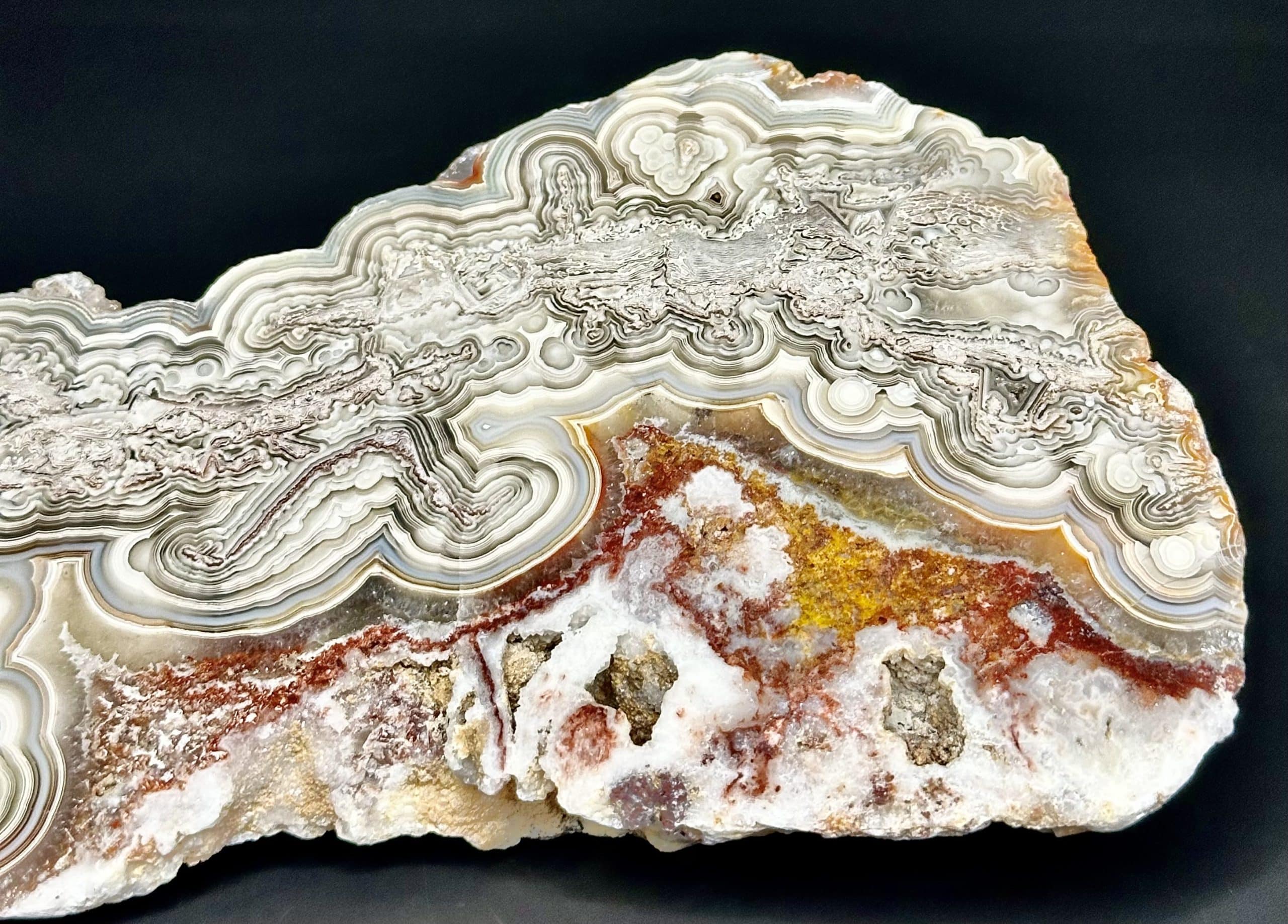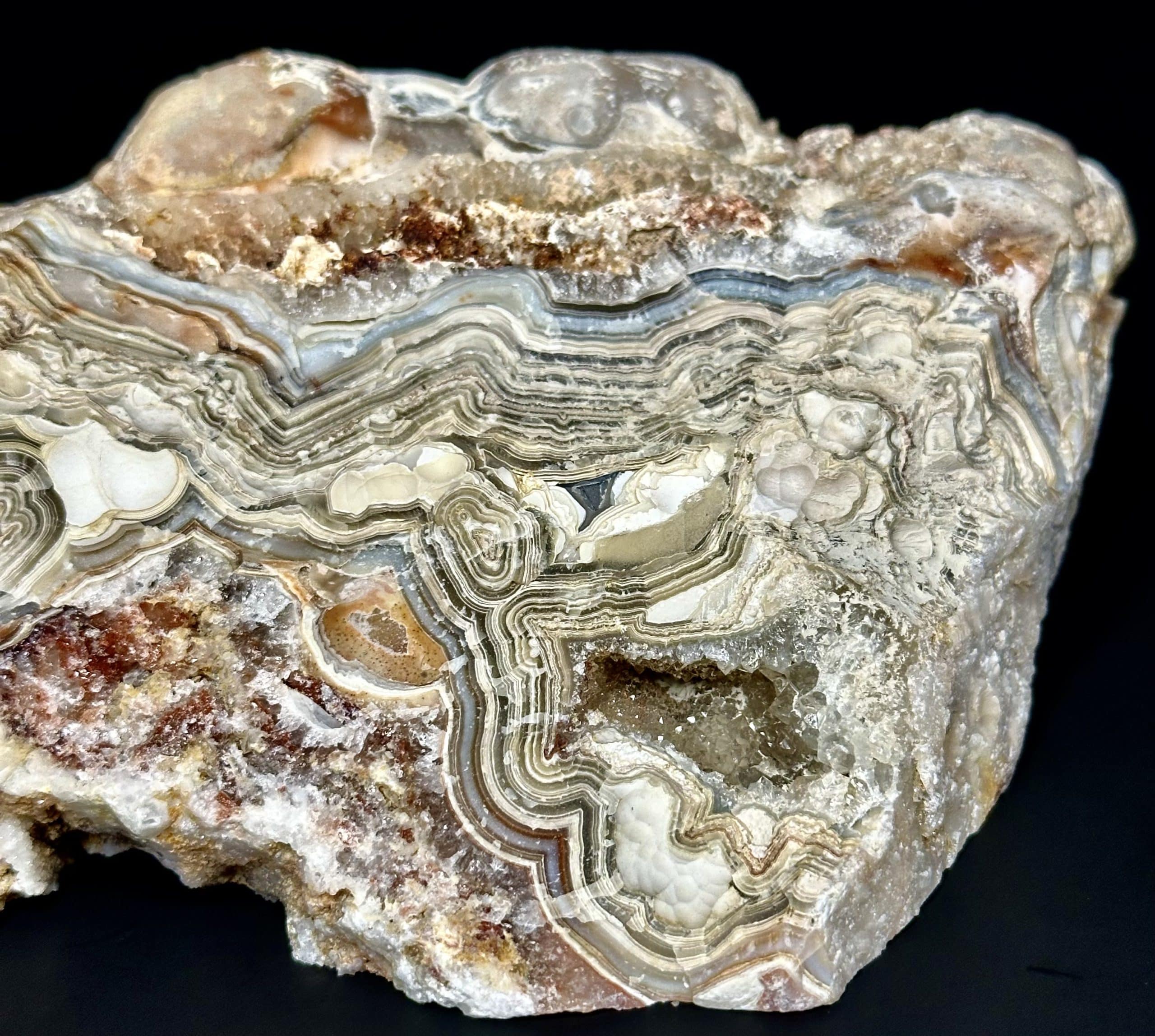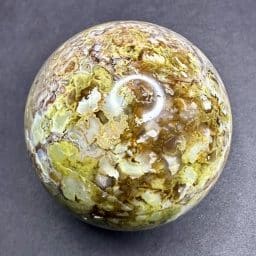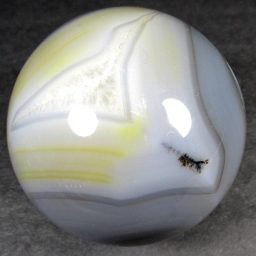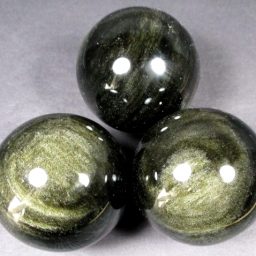Description
Among the best-known varieties of banded chalcedony is the stone often known as Mexican Crazy Lace Agate. The hardness of the material makes it a joy to cut, while the intricate patterns have made it a favorite since the 1950s. This unique agate forms into many different patterns in many colors, but the stones generally have a common “theme.”
Mexican Crazy Lace Agate, henceforth referred to as Mexican Agate, is a banded chalcedony variety. Like many agates, it’s found primarily in limestone. The nodules vary widely in color, but they generally have a few common patterns.
Specifically, you’ll find that these stones are largely fortification agates. This loose category of agates generally means that the banding in the stones will have sharp angles. Scattered among these layers of colored silica are orbicular patterns, consisting of concentric circles of color. This gives the stone the “lace” name, as it loosely resembles the intricate patterns of lace fabric.
Like all agates, Mexican Agate is comprised largely of cryptocrystalline silica. This is the same mineral that makes up quartz, but chalcedony is most often a mixture of quartz and its polymorph moganite at the microscopic level. The various impurities which make their way in are the source of the stone’s coloration. These agates vary widely in color. While some material consists only of monochromatic white, grey, and black spots, others may bear green or blue bits. The most prized have red and pink worked into them, creating dramatic coloration. For most of us, the red variety is the first one that comes to mind.
Mexican Agates are found as both smoother nodules and in a botryoidal form. This latter form is comprised of small, intersecting spheres. These generally give you a good idea of where the orbicular portions of the stone are, making the rough easier to identify and work with.
These agates are thought to be between 65 and 95 million years old. They’re found in various limestone formations in Northern Mexico.
Agate formation isn’t 100% understood, but the general idea is that hot water seeps into empty pockets in the limestone bedrock. The hot water carries large amounts of silica, which deposit as the water slowly evaporates. It’s often thought that the water which forms them is closer to a gel due to the heat and pressure involved in their formation. As time goes on, the agates will form in bands. We’re still not quite sure if they form from the outside in or the inside out. Both theories have valid points, and the truth is that both could be true and it depends on the region in which they form. Another theory holds that the silica forms a colloidal solution within the cavity and the separate layers are caused by differing particle sizes as the material cools over millions of years.
The various colors come from metallic ions that are present underground. For instance, red often comes from the same form of iron oxide which we generally call rust. Different concentrations lead to different shades and different metals lead to different colors.
Where is Mexican Crazy Lace Agate Found?
Mexican Crazy Lace Agate is found in quite a few locations scattered across the Mexican state of Chihuahua. For the most part, it’s found in mountainous regions within the state, such as Sierra Santa Lucia.
For the most part, these stones are found in municipalities about halfway across the state, generally due south of Ciudad Juarez. If you’re interested in rockhounding in the area, it’s best to find someone local to guide you. Mexico appears to be generally lenient when it comes to rockhounding, and some people have been known to take a car trip down there to collect, but you’ll want to make sure you’re aware of any local regulations that you may run afoul of.
Agates mostly occur as nodules in volcanic rocks or waters containing Silica in solution which is possibly derived from the decomposition of Silicates in the lava. The Siliceous matter is deposited in regular layers resulting in the banded or striped formation. It is very unlikely that you would ever find an exact duplicate of any type of Agate.





